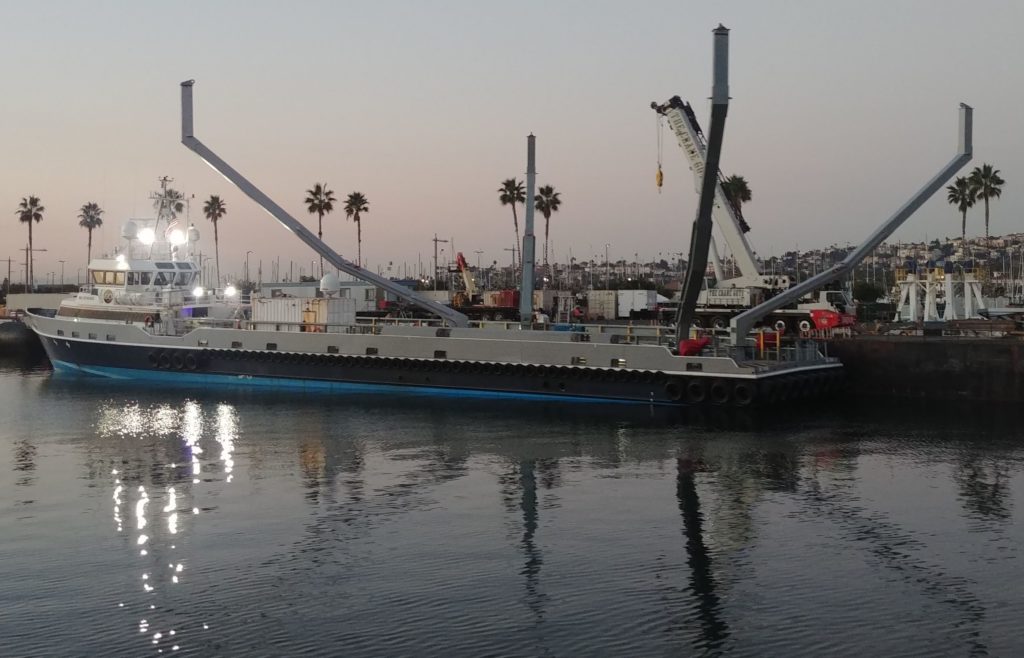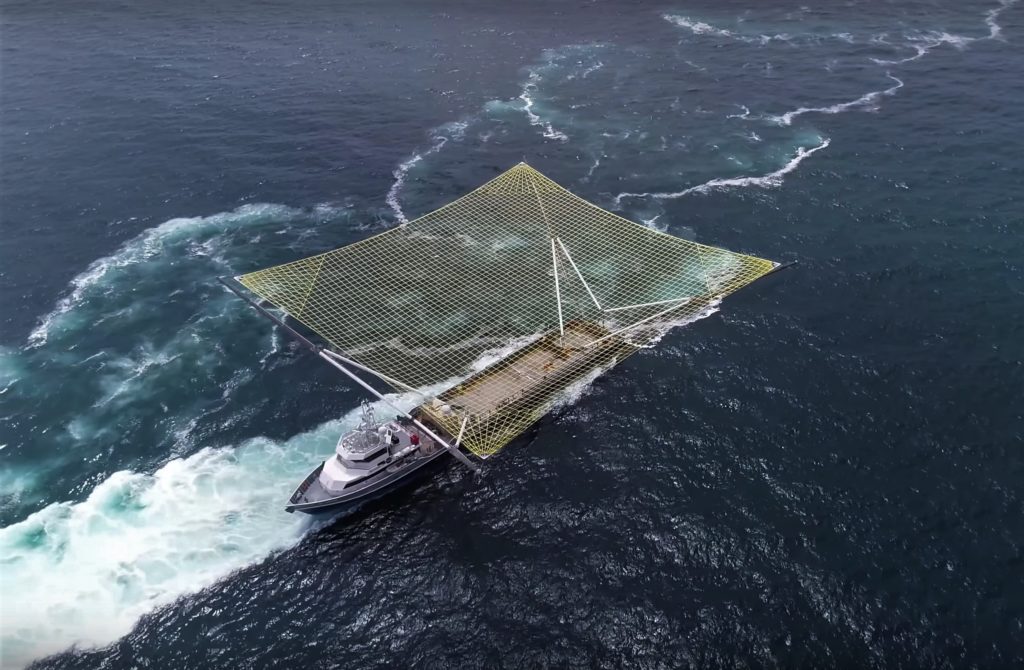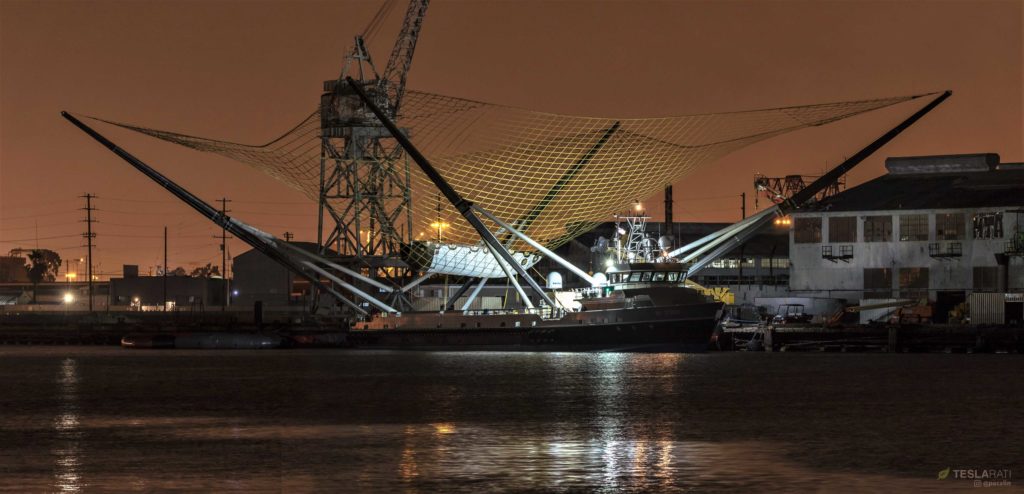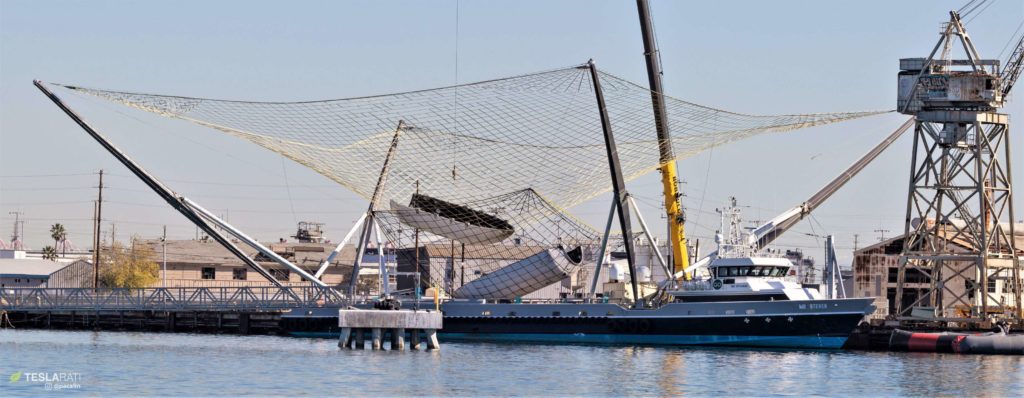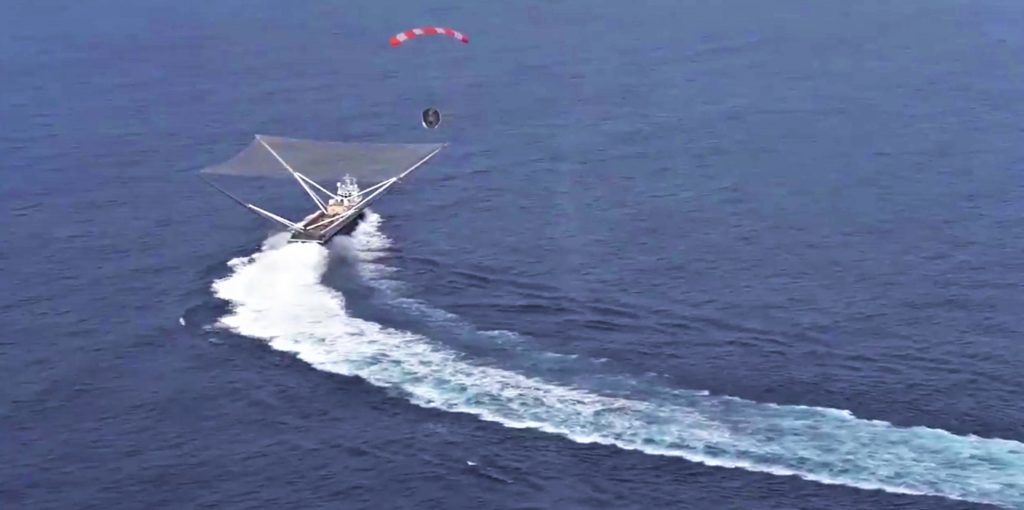

SpaceX
SpaceX fairing catcher Mr. Steven heads for Panama Canal after one last drop test
Iconic fairing recovery vessel Mr. Steven appears to have quietly departed for SpaceX’s Florida launch facilities a few days after completing (successfully or not) one final controlled fairing catch test in the Pacific Ocean.
While bittersweet for those that have closely followed the vessel’s development and many attempted Falcon fairing recoveries, this move should ultimately give Mr. Steven around three times as many opportunities to attempt fairing recoveries thanks to SpaceX’s significantly higher East Coast launch cadence.
Mr Steven docking last night after another helicopter drop test, fairing half aboard. #spacex @Teslarati pic.twitter.com/1uMm8ktzWY
— Pauline Acalin (@w00ki33) January 26, 2019
Under SpaceX lease since late 2017, the company moved the vessel to California and modified it with its first net and set of arms around December 2017. Mr. Steven attempted his first Falcon fairing catch – each half worth more than $3M – in February 2018 after the launch of Earth imaging satellite PAZ and two SpaceX Starlink prototypes, thus beginning a string of five unsuccessful recovery attempts for West Coast Falcon 9 launches. The lack of success has most certainly not been for a lack of trying, exemplified in large part by Mr. Steven’s frequent net and arm upgrades over the last year, culminating in the installation of four massive arms, a vast primary net, and a smaller secondary net below it.
Recent fairing recovery test with Mr. Steven. So close! pic.twitter.com/DFSCfBnM0Y
— SpaceX (@SpaceX) January 8, 2019
SpaceX engineers and technicians repeatedly managed to get Falcon fairing halves – autonomously guided by GPS after deploying parafoils – within 50 to a few hundred feet during several of those five post-launch attempts. In the last few months of 2018, SpaceX also began a program of controlled fairing drop tests, where a helicopter would lift a fairing half 5,000-10,000 feet up before releasing it for Mr. Steven. A recent drop test organized in either late-December or early-January saw the parasailing fairing half get so close to a successful catch that its parafoil rigging actually appeared to get tangled on (or at least bump) the edge of Mr. Steven’s net, spanning an area of around 3000 square meters (~30,000 sq ft).
Barring a continuation of SpaceX’s helicopter drop test program on the East Coast, Mr. Steven’s final controlled fairing recovery attempt occurred on January 25th, perhaps less than four days before the ship departed for Florida. After maneuvering wildly and reaching 28 mph (45 km/h) – the fastest speed yet clocked – on his trip back to port, Mr. Steven arrived with a fairing half tantalizingly cradled in the ship’s new secondary net, a perfectly ambiguous state that could indicate a successful catch and net transfer or a missed catch and ocean retrieval, with the smaller net used as an ad-hoc shock absorber during his sprint to port.
- The apparent fairing-grabbing mechanism or robot spotted aboard the SpaceX-leased vessel Mr. Steven. (Reddit /u/ vshie)
- Not nearly enough net, as it turned out. (Pauline Acalin, May 2018)
- Mr Steven testing his new net in a series of sea trials, July 11
- Mr. Steven returned to Port of San Pedro around on October 8th after a day spent at sea, apparently with a Falcon fairing half in tow. This is the second known time that a fairing has been in Mr. Steven’s net. The fairing was eventually lifted off around noon the following day. (Pauline Acalin)
- Mr. Steven was captured performing tests with a duo of fairings and nets at its Port of LA berth, January 22nd. (Pauline Acalin)
- Prior to his Panama Canal exit, Mr. Steven barely missed 2-3 successful Falcon fairing catches during several controlled drop tests. (SpaceX)
Back to Port Canaveral
Prior to Mr. Steven’s California station and arm/net upgrade, the vessel was introduced to SpaceX in Florida as a sort of faster version of the slower service vessels already used to support drone ship deployments and recover fairing halves (or shards) out of the ocean. Although it remains entirely possible that Mr. Steven’s abrupt journey towards southern Mexico is a false alarm, it appears quite likely that the vessel will ultimately end up back where it started its SpaceX journey. After returning to Port Canaveral, Mr. Steven should be able to support a range of post-launch fairing recovery attempts thanks to SpaceX’s consistently-busy East Coast launch schedule.
At his current cruising speed of ~18 knots (21 mph/35 km/h), Mr. Steven will take at least 9-10 days (~220-240 hours) to travel the ~7500 km (4600 mi) of ocean separating Port of LA and Port Canaveral. Even assuming many lengthy stops for fuel and supplies, the vessel should easily arrive in time to attempt its first East Coast fairing catch in support of SpaceX’s next launch, NET February 18th. After that, Crew Dragon’s inaugural orbital launch (DM-1) is targeted for late February, followed by Cargo Dragon’s 17th operational mission (NET March 16th) and the second-ever launch of Falcon Heavy, absolutely no earlier than March 7th.
Mr. Steven appears to have quietly departed Port of Los Angeles for Manzanillo, a port on the southwest coast of Mexico. This is likely Leg #1 of a voyage to Port Canaveral, where he can support #SpaceX's more frequent Florida launches. He'll be missed on the West Coast 🙁 pic.twitter.com/Jb5cOA2Cda
— Eric Ralph (@13ericralph31) January 29, 2019
News
SpaceX launches Ax-4 mission to the ISS with international crew
The SpaceX Falcon 9 launched Axiom’s Ax-4 mission to ISS. Ax-4 crew will conduct 60+ science experiments during a 14-day stay on the ISS.
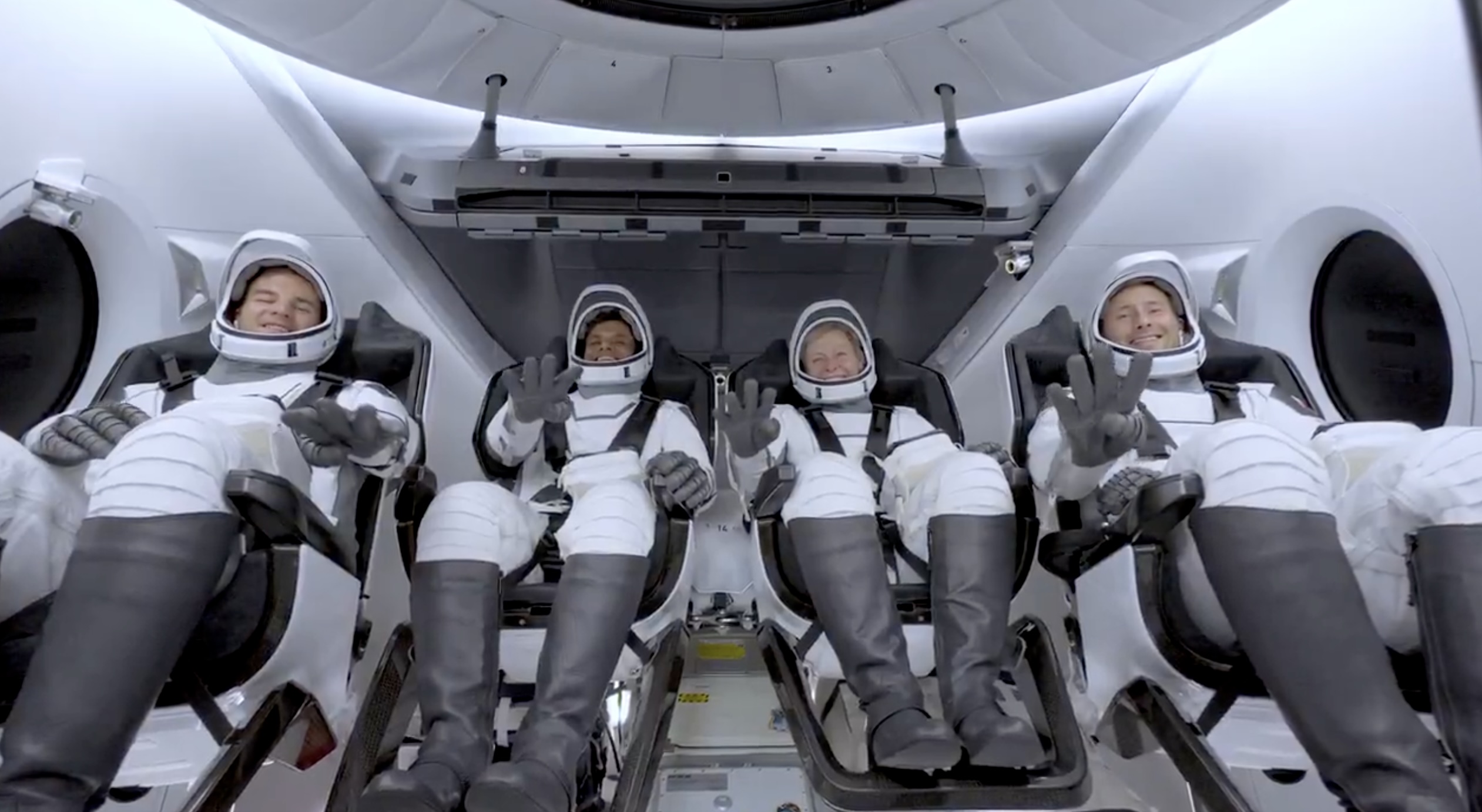
SpaceX launched the Falcon 9 rocket kickstarting Axiom Space’s Ax-4 mission to the International Space Station (ISS). Axiom’s Ax-4 mission is led by a historic international crew and lifted off from Kennedy Space Center’s Launch Complex 39A at 2:31 a.m. ET on June 25, 2025.
The Ax-4 crew is set to dock with the ISS around 7 a.m. ET on Thursday, June 26, 2025. Axiom Space, a Houston-based commercial space company, coordinated the mission with SpaceX for transportation and NASA for ISS access, with support from the European Space Agency and the astronauts’ governments.
The Ax-4 mission marks a milestone in global space collaboration. The Ax-4 crew, commanded by U.S. astronaut Peggy Whitson, includes Shubhanshu Shukla from India as the pilot, alongside mission specialists Sławosz Uznański-Wiśniewski from Poland and Tibor Kapu from Hungary.
“The trip marks the return to human spaceflight for those countries — their first government-sponsored flights in more than 40 years,” Axiom noted.
Shukla’s participation aligns with India’s Gaganyaan program planned for 2027. He is the first Indian astronaut to visit the ISS since Rakesh Sharma in 1984.
Axiom’s Ax-4 mission marks SpaceX’s 18th human spaceflight. The mission employs a Crew Dragon capsule atop a Falcon 9 rocket, designed with a launch escape system and “two-fault tolerant” for enhanced safety. The Axiom mission faced a few delays due to weather, a Falcon 9 leak, and an ISS Zvezda module leak investigation by NASA and Roscosmos before the recent successful launch.
As the crew prepares to execute its scientific objectives, SpaceX’s Ax-4 mission paves the way for a new era of inclusive space research, inspiring future generations and solidifying collaborative ties in the cosmos. During the Ax-4 crew’s 14-day stay in the ISS, the astronauts will conduct nearly 60 experiments.
“We’ll be conducting research that spans biology, material, and physical sciences as well as technology demonstrations,” said Whitson. “We’ll also be engaging with students around the world, sharing our experience and inspiring the next generation of explorers.”
SpaceX’s Ax-4 mission highlights Axiom’s role in advancing commercial spaceflight and fostering international partnerships. The mission strengthens global space exploration efforts by enabling historic spaceflight returns for India, Poland, and Hungary.
News
Starlink Cellular’s T-Mobile service to grow with third-party app data
From Oct 2025, T-Satellite will enable third-party apps in dead zones! WhatsApp, X, AccuWeather + more coming soon.
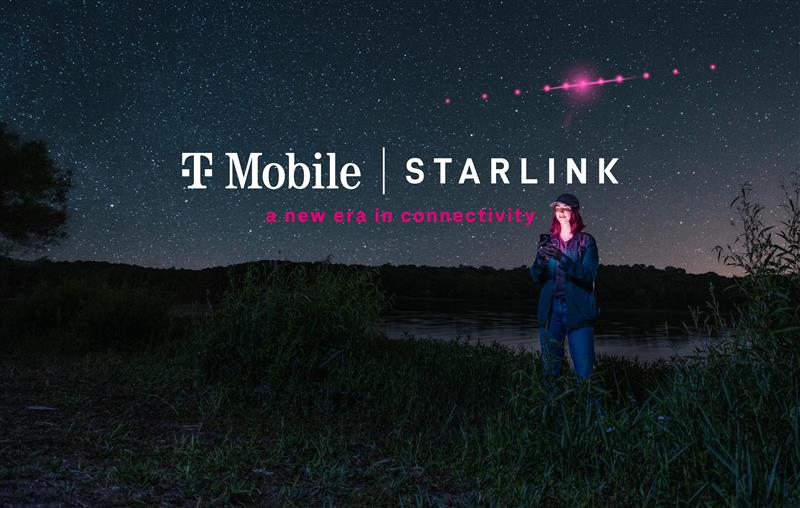
Starlink Cellular’s T-Mobile service will expand with third-party app data support starting in October, enhancing connectivity in cellular dead zones.
T-Mobile’s T-Satellite, supported by Starlink, launches officially on July 23. Following its launch, T-Mobile’s Starlink Cellular service will enable data access for third-party apps like WhatsApp, X, Google, Apple, AccuWeather, and AllTrails on October 1, 2025.
T-Mobile’s Starlink Cellular is currently in free beta. T-Satellite will add MMS support for Android phones on July 23, with iPhone support to follow. MMS support allows users to send images and audio clips alongside texts. By October, T-Mobile will extend emergency texting to all mobile users with compatible phones, beyond just T-Mobile customers, building on its existing 911 texting capability. The carrier also provides developer tools to help app makers integrate their software with T-Satellite’s data service, with plans to grow the supported app list.
T-Mobile announced these updates during an event celebrating an Ookla award naming it the best U.S. phone network, a remarkable turnaround from its last-place ranking a decade ago.
“We not only dream about going from worst to best, we actually do it. We’re a good two years ahead of Verizon and AT&T, and I believe that lead is going to grow,” said T-Mobile’s Chief Operating Officer Srini Gopalan.
T-Mobile unveiled two promotions for its Starlink Cellular services to attract new subscribers. A free DoorDash DashPass membership, valued at $10/month, will be included with popular plans like Experience Beyond and Experience More, offering reduced delivery and service fees. Meanwhile, the Easy Upgrade promotion targets Verizon customers by paying off their phone balances and providing flagship devices like the iPhone 16, Galaxy S25, or Pixel 9.
T-Mobile’s collaboration with SpaceX’s Starlink Cellular leverages orbiting satellites to deliver connectivity where traditional networks fail, particularly in remote areas. Supporting third-party apps underscores T-Mobile’s commitment to enhancing user experiences through innovative partnerships. As T-Satellite’s capabilities grow, including broader app integration and emergency access, T-Mobile is poised to strengthen its lead in the U.S. wireless market.
By combining Starlink’s satellite technology with strategic promotions, T-Mobile is redefining mobile connectivity. The upcoming third-party app data support and official T-Satellite launch mark a significant step toward seamless communication, positioning T-Mobile as a trailblazer in next-generation wireless services.
News
Starlink expansion into Vietnam targets the healthcare sector
Starlink aims to deliver reliable internet to Vietnam’s remote clinics, enabling telehealth and data sharing.

SpaceX’s Starlink expansion into Vietnam targets its healthcare sector. Through Starlink, SpaceX seeks to drive digital transformation in Vietnam.
On June 18, a SpaceX delegation met with Vietnam’s Ministry of Health (MoH) in Hanoi. SpaceX’s delegation was led by Andrew Matlock, Director of Enterprise Sales, and the discussions focused on enhancing connectivity for hospitals and clinics in Vietnam’s remote areas.
Deputy Minister of Health (MoH) Tran Van Thuan emphasized collaboration between SpaceX and Vietnam. Tran stated: “SpaceX should cooperate with the MoH to ensure all hospitals and clinics in remote areas are connected to the StarLink satellite system and share information, plans, and the issues discussed by members of the MoH. The ministry is also ready to provide information and send staff to work with the corporation.”
The MoH assigned its Department of Science, Technology, and Training to work with SpaceX. Starlink Vietnam will also receive support from Vietnam’s Department of International Cooperation. Starlink Vietnam’s agenda includes improving internet connectivity for remote healthcare facilities, developing digital infrastructure for health examinations and remote consultations, and enhancing operational systems.
Vietnam’s health sector is prioritizing IT and digital transformation, focusing on electronic health records, data centers, and remote medical services. However, challenges persist in deploying IT solutions in remote regions, prompting Vietnam to seek partnerships like SpaceX’s.
SpaceX’s Starlink has a proven track record in healthcare. In Rwanda, its services supported 40 health centers, earning praise for improving operations. Similarly, Starlink enabled remote consultations at the UAE’s Emirati field hospital in Gaza, streamlining communication for complex medical cases. These successes highlight Starlink’s potential to transform Vietnam’s healthcare landscape.
On May 20, SpaceX met with Vietnam’s Ministry of Industry and Trade, announcing a $1.5 billion investment to provide broadband internet, particularly in remote, border, and island areas. The first phase includes building 10-15 ground stations across the country. This infrastructure will support Starlink’s healthcare initiatives by ensuring reliable connectivity.
Starlink’s expansion in Vietnam aligns with the country’s push for digital transformation, as outlined by the MoH. By leveraging its satellite internet expertise, SpaceX aims to bridge connectivity gaps, enabling advanced healthcare services in underserved regions. This collaboration could redefine Vietnam’s healthcare infrastructure, positioning Starlink as a key player in the nation’s digital future.
-

 Elon Musk2 weeks ago
Elon Musk2 weeks agoTesla investors will be shocked by Jim Cramer’s latest assessment
-

 Elon Musk2 days ago
Elon Musk2 days agoxAI launches Grok 4 with new $300/month SuperGrok Heavy subscription
-

 Elon Musk4 days ago
Elon Musk4 days agoElon Musk confirms Grok 4 launch on July 9 with livestream event
-

 News1 week ago
News1 week agoTesla Model 3 ranks as the safest new car in Europe for 2025, per Euro NCAP tests
-

 Elon Musk2 weeks ago
Elon Musk2 weeks agoA Tesla just delivered itself to a customer autonomously, Elon Musk confirms
-

 Elon Musk1 week ago
Elon Musk1 week agoxAI’s Memphis data center receives air permit despite community criticism
-

 News2 weeks ago
News2 weeks agoXiaomi CEO congratulates Tesla on first FSD delivery: “We have to continue learning!”
-

 Elon Musk1 week ago
Elon Musk1 week agoTesla scrambles after Musk sidekick exit, CEO takes over sales

